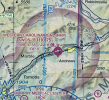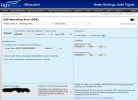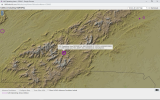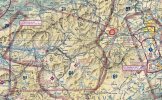Let's talk about LAANC.
As LAANC is currently deployed, there exists a national system through which UAS pilots input their flight missions when flying in controlled airspace, await approval, and then fly within the contraints they input. They indicate a geographical area they will operate in and a maximum altitude they plan to operate at, and set a mission time limit after which the area can be considered no longer in use by the UAS.
The system then... does nothing useful with this information. Does ATC see this information? No, they do not. Do pilots see this information? No, they do not. The information lives in a government database and is otherwise not made visible to any of the relevant parties that it might be useful to. The only exception is approvals that are made non-automatically (for missions that exceed typical scope -- altitude above airspace limits, missions that are very close to the airport (in areas where you'd see "0" as the auto approved altitude), etc.
Why does it exist? Why ask UAS operators to input information that would be useful to other parties and then not make that information accessible to them? Are there plans in the future to make that information visible to the relevant parties? To build UAS information into the ATC datastream so that ATC can see UAS LAANC approvals? To allow pilots to see UAS operations areas in their data stream? Is LAANC in its current form just a "placeholder" of sorts -- much like you build out the power lines in a power grid before you actually flip the switch and send electricity down the lines?
As LAANC is currently deployed, there exists a national system through which UAS pilots input their flight missions when flying in controlled airspace, await approval, and then fly within the contraints they input. They indicate a geographical area they will operate in and a maximum altitude they plan to operate at, and set a mission time limit after which the area can be considered no longer in use by the UAS.
The system then... does nothing useful with this information. Does ATC see this information? No, they do not. Do pilots see this information? No, they do not. The information lives in a government database and is otherwise not made visible to any of the relevant parties that it might be useful to. The only exception is approvals that are made non-automatically (for missions that exceed typical scope -- altitude above airspace limits, missions that are very close to the airport (in areas where you'd see "0" as the auto approved altitude), etc.
Why does it exist? Why ask UAS operators to input information that would be useful to other parties and then not make that information accessible to them? Are there plans in the future to make that information visible to the relevant parties? To build UAS information into the ATC datastream so that ATC can see UAS LAANC approvals? To allow pilots to see UAS operations areas in their data stream? Is LAANC in its current form just a "placeholder" of sorts -- much like you build out the power lines in a power grid before you actually flip the switch and send electricity down the lines?















